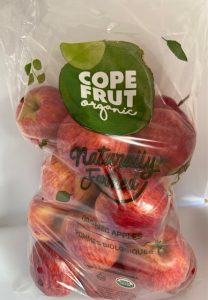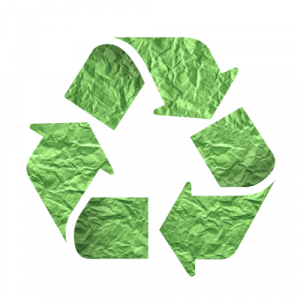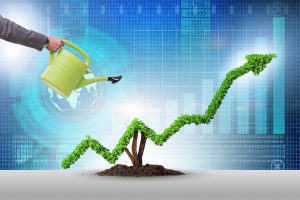Material Recyclability Index Use of sustainable packaging in the fruit and vegetable industry
Quantifying the recyclability of packaging for strategic decision-making is one of the objectives of the new Copefrut initiative, developed in collaboration with Dictuc’s GreenLab at the Catholic University of Chile.
Sustainable packaging is beginning to replace traditional packaging, a trend that has gone hand in hand with what customers want and that has also gained momentum thanks to the commitment of companies across all sectors, which currently ensure both that standards are upheld and that their organizations provide a real contribution.
According to the World Health Organization, for packaging to be considered sustainable, it must use “the lowest amount of materials and only essential packaging; less volume and weight; less use of plastic; sustainable life cycle from manufacturing to transport, through subsequent recycling, energy and water used; reusability; low impact on workers’ health; and materials that do not include chemicals dangerous to human or animal health”.
Plastic is one of the largest remnants of the fruit and vegetable industry. It appears in various processes within the production chain and although there are increasing technologies aimed at making it eco-friendly, there is still a lot of work to be done in this area.
Copefrut, a Chilean company with more than 65 years in the market for the production and export of traditional and organic fresh fruit, has developed a Material Recyclability Index, a measure that seeks to understand the capacity of packaging to be integrated into recycling flows.
“This quantifies the recyclability of packaging, considering not only what type of materials are being used, but also how they affect the products (inks, glues, waxes) that are applied to it and what is the effective probability of recycling in the different countries to which the materials are being sent,” said Daniela Quiroga, Project Engineer of Dictuc’s GreenLab Research Center at the Catholic University of Chile.
The latter point, she explained, is of vital importance since “it is of no use for a material to be optimal for recycling if there is no technology or the necessary incentive for it to be recycled”.
Copefrut has been one of the pioneering companies in innovation and facing the model shift in the fruit industry. “We understand that sustainability is no longer an option, but rather an issue that we must develop for the good of our customers, our employees and the planet,” María José Castillo, the company’s Supply Manager said.
In this sense, in addition to current sustainable actions such as oxo-biodegradable bags, Macro-Plastic Bins, Pallet Chep, and 100% recyclable boxes and corner pieces, among others, this year Copefrut managed the packaging of two containers with 100% compostable bags made from sugar cane.
The development was in the hands of the German supplier, Bio4pack, who together with a multidisciplinary team from Copefrut, proved the technology to pack organic apples. “Plastics with these characteristics can be converted into organic fertilizer, also known as compost, and its main characteristic is that at least 90% of the material degrades in a maximum period of six months, thus managing the end of the product’s life with a circular approach,” María José Castillo of Copefrut explained.
This innovative move by company is the first action that was evaluated with the Recyclability Index, elaborated with the advice of Dictuc. The substitution materials increased the recyclability of each individual sale by 1.4%, a value that can have a significant impact on the total recyclability of the company as the proportion of sales in this format increases.
“Copefrut is taking charge of making a complete analysis, both of the recyclability – which by their nature the materials that are being used already have – and of the existence of the necessary channels for their recycling at the destination. The use and analysis of this indicator will make it easier for the company to identify where it has to put efforts to improve the recyclability of its packaging, significantly increasing the probability that they will be recycled, and efficiently and effectively approaching its sustainability objectives,” said Daniela Quiroga from Dictuc’s GreenLab.
The Index, which is dynamic in its application, will make it possible to “evaluate and analyze the percentage of recyclability of each of our materials and therefore make strategic decisions that push retail, the market and the industry, in terms of their efforts together with their suppliers and clients,” Castillo said.
It is becoming increasingly essential that packaging used in developing exporting countries be compatible with the environment and customer requirements. Given this, it is important to stay informed about new laws, regulations and other initiatives related to packaging, but above all, about research, development and innovation in the field. You just have to dare to make a change, something that Copefrut has already started with its Material Recyclability Index.



